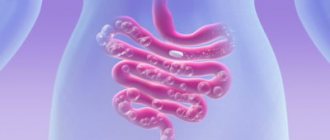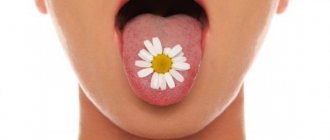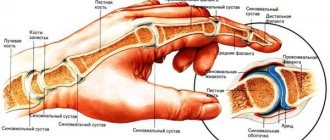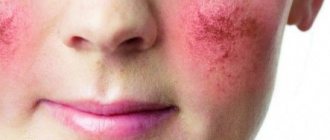Symptoms of insomnia
- difficulty falling asleep (the most common symptom)
- light, shallow sleep, with frequent awakenings
- early awakening, after which a person can no longer fall asleep.
Such sleep does not allow for complete rest, so a person becomes irritable, inattentive, has difficulty concentrating, and has decreased productivity in any activity.
Many middle-aged people suffer from insomnia. If you ask everyone you meet: “Are you satisfied with your sleep?”, then every third person will answer: “No.” Therefore, many are interested in the question: how to overcome insomnia? Are there any methods other than sleeping pills? Is it possible to normalize sleep forever? And what are the main causes of insomnia?
Why does a person suffer from insomnia?
The causes of insomnia can be very different, despite the predominant psycho-emotional factor. That is why there are three main groups of conditions that can provoke insomnia.
Mental reasons:
- Excessive emotional stress.
- A long-term state of stress associated with troubles of various kinds - from the loss of a loved one to problems at work.
- Mental fatigue, when a person has to stay at work for a long time, especially during reporting periods.
- Constant fear and anxiety.
- Change of time zones.
- Work night shifts.
People often suffer from insomnia on the eve of important events - due to excitement, they begin to worry and replay the future situation. With excessive consumption of caffeine-containing drinks, which have a stimulating effect on the nervous system, insomnia is also observed. It is caused by some medications, as this is their side effect. If no cause is found, insomnia is called idiopathic.
Pathological processes in the body:
- Diseases of the bronchopulmonary system.
- Allergic reactions.
- Disturbances in the urinary system.
- Hyperthyroidism.
- Oncology.
- Diabetes.
In fact, the list of diseases that can cause insomnia is much longer, but it is the listed types that most often provoke this condition.
Other reasons that make you think about how to treat insomnia:
- Evening overeating, abuse of fatty foods.
- Bright light in the room, noise.
- Abuse of caffeine-containing drinks.
- Drinking alcohol, smoking.
- Taking medications.
- Fasting, diet.
Obviously, insomnia is not a symptom of psychological pathology only, so timely consultation with a doctor will quickly stabilize the condition. As a result, you won't have to constantly think about how to get rid of insomnia.
External factors
External causes of insomnia are factors whose cause is located outside the body. These include:
- emotional overstrain, stress, depression;
- smoking tobacco products, frequent drinking of alcohol;
- violation of work and rest patterns, which leads to disruptions in biological rhythms;
- non-compliance with dietary recommendations;
- taking certain medications without prescription from a healthcare professional;
- maintaining a sedentary lifestyle;
- ignoring the rules of sleep organization.
- stress
Internal factors
This group of factors includes diseases of the body in which insomnia is one of the symptoms. Among them are:
- hyperthyroidism;
- parkinsonism;
- damage to the brain, kidneys;
- hormonal imbalance.
Varieties
The following types of insomnia are distinguished by duration:
- Acute (up to three months) – associated with strong nervous stress of any nature.
- Chronic (more than three months) – develops against the background of constant fatigue or active brain activity in the evening hours. Insomnia is a serious illness.
Insomnia is also classified according to the causes of its occurrence:
- Primary - appears at moments when a person replays the same situation, for example, on the eve of an important event (not associated with any diseases, taking medications or caffeine).
- Secondary - manifests itself against the background of some diseases, as a result of abuse of coffee, alcohol, or drugs.
- Idiopathic - its causes have not been established, so it is very difficult to find a remedy for this type of insomnia.
Treatment of insomnia. What helps?
In case of prolonged sleep disturbance, it is recommended to consult a doctor, since the treatment of insomnia depends on its type, degree and course. If this condition is associated with psychological problems, you may need the help of a psychotherapist. When dealing with insomnia associated with taking medications, it is necessary to adjust the dosage or change the prescribed medications. In case of primary sleep disturbance, it is enough to take sedative medications to balance emotions; sleeping pills should be used only as a last resort. If insomnia is caused by chronic diseases, then first of all it is necessary to treat them.
In order to overcome insomnia, it is recommended to maintain sleep hygiene: ventilate the room intended for sleeping. The room should be fairly dark and quiet. It's good to get into the habit of walking outdoors in the evening. Sometimes a bath and a glass of warm milk before bed can help overcome insomnia without medication. Limit the amount of coffee, cigarettes, and alcohol you drink per day. Play sports; muscle fatigue helps you fall asleep.
The consequences of insomnia can be very different, so it is worth eradicating the cause of the pathology and normalizing your sleep and rest patterns. In addition to health problems, insomnia can cause accidents on the road, or other consequences that will indirectly be caused by chronic sleep disorders.
Etiology and pathogenesis
The cause of the disease is a genome defect. As a result of mutation, the brain protein acquires the properties of a prion. After that, it changes the structure of other proteins, turning them into similar molecules.
Toxic proteins accumulate in the thalamus and do not perform their normal function. Neurons die. This leads to dysfunction of the organ. The thalamus is involved in the regulation of the patient's sleep and wakefulness, the release of hormones, and thermoregulation.
Clinical picture: symptoms
The thalamus is the center that controls falling asleep and sleep phases. In addition, it is responsible for thermoregulation and the release of hormonal substances into the blood. When it is destroyed, the patient loses the ability to sleep normally, and the hormonal balance in the body is disrupted. Against the background of brain exhaustion, mental changes develop.
With FSB, the clinic appears at the age of 30-70 years. The disease lasts on average 7-9 months. After this, death occurs. Unfortunately, to date there are no known cases of healing from the symptoms of FSB.
Stages
During the last months of life, the patient goes through several stages of the disease. The onset of the disease is manifested by severe sweating, pallor, and constriction of the pupils. Patients with a family history often indicate that this is how the first symptoms appeared in their relatives.
In the first stage, the patient is bothered by insomnia. The amount of sleep is reduced to 4 hours a day. Against the background of lack of sleep and fears for one’s health, the mental sphere is disturbed. The patient is worried about panic attacks with a varied clinical picture. When talking with a psychiatrist or psychotherapist, he talks about phobias that worsen during this period. The response to sleeping pills and psychoactive drugs is reduced. The stage can last about 4 months.
In the second stage, the patient's sleep is shortened to 1-3 hours. It is more like falling into unconsciousness than a healthy rest. In addition, the patient exhibits hallucinations. They are visual, auditory, and gustatory. Panic attacks and anxiety increase. The patient can no longer cope normally with household and professional responsibilities. Extremely low sensitivity to sleeping pills and sedatives remains. The duration of the stage is about 5 months.
In the third stage, sleep is completely lost. The patient may unconsciously “switch off” for several tens of minutes. But after that it’s hard for him to return “to reality.” The patient stops eating. Weight is lost quickly. Any activity decreases and the care of a stranger is required. The stage lasts about 3 months.
The terminal period is accompanied by loss of social contacts. The patient is unconscious, does not respond to stimuli, and does not take food or water. The stage ends in death.
Diagnostic methods
A patient with suspected FSB undergoes a polysomnography study. This technique evaluates sleep parameters. About a dozen criteria are recorded: snoring, respiratory flow, chest and abdominal wall movements, electrocardiogram, EEG, electromyogram, oculogram, limb movements. Using them, you can study the duration of sleep phases and their pathological changes.
Family history and genetic testing can confirm chronic fatal insomnia. The location of the gene mutation is known (PrP in codon 178 of chromosome 20). However, genetic counseling for people without symptoms raises many ethical questions.
Often a person cannot cope with such a heavy “moral” burden. This leads to suicide or decreased responsibility of patients for their lives. In later stages, MRI and PET scans show organic and structural pathology of the thalamus. The scans show zones of hypometabolism in the thalamus. So, the main diagnostic methods:
- MRI;
- Polysomnography;
- PAT;
- Genetic analysis.
How to distinguish FSB from ordinary insomnia
| Common insomnia | FSB |
| No family history | Inherited in an autosomal dominant manner |
| Difficulty falling asleep | Progressive decrease in sleep duration |
| To facilitate falling asleep, the patient uses alcohol, sleeping pills or other substances | Sleeping pills do not provide relief |
| Sleep disturbance reduces work ability | FSB leads to death |
Prognosis and outcome of the disease
To date, there is no effective treatment for FSB. Usually the disease leads to death of the patient. Death occurs on average after 9-36 months.
A documented case of increased life expectancy was observed in one patient and the United States. He did not accept his fate, but continued to live a full life. To induce sleep, he used strong sleeping pills in combination with a sensory deprivation chamber.
While awake, he exercised himself and took vitamins and dietary supplements. He also tried electroshock therapy, which was unsuccessful. Despite a stubborn fight against the disease, the patient died.
Probability of disease occurrence, prevalence, risk groups
The likelihood of FSB occurring is very likely in close relatives of the patient. The type of inheritance is autosomal dominant. This means that if one parent has a defective gene, then the probability of having a sick child is 50%. If the second parent also has a defective gene, then the risk of having a sick heir increases to 75%.
But the sporadic form can appear in any person. In this case, a mutation must occur in the PrP gene with the formation of a prion particle. This happens extremely rarely.
FSB is a rare pathology. About 40 families registered in the world possess the PrP gene. They live in France, Italy, USA, Japan. There is a case of a patient from the Netherlands who had African roots (born in Egypt). In Russia, cases of FBS have not been recorded.
The risk group includes relatives of sick patients. Cases of insomnia were first reported in the 18th century. An Italian named Giacomo had a similar illness described in 1765. And then in his family, cases of pathology were repeated in every generation. Already in the 20th century, the Italian Silvano, thanks to whom the prion nature of the disease was discovered, knew his ancestry up to the fifth generation and accurately listed relatives who died from the “family curse.”











